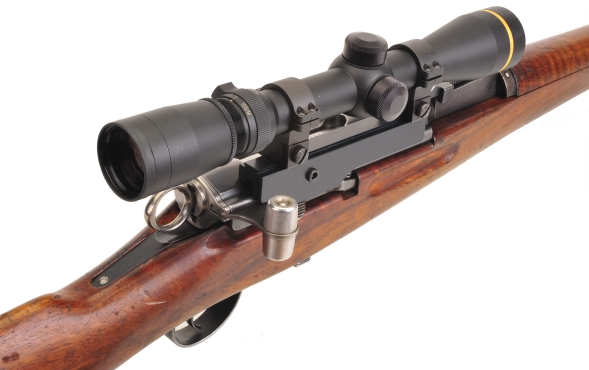
Scoping an old military rifle is somewhat problematic for a number of reasons. The great majority were not manufactured for use with a scope and modifying an original firearm to accommodate a scope most often decreases resale value. Many of the designs for mounts that do not require permanent modification are the product of dabblers who don’t understand the intent of basic machines, how leverage works and the down side of excess mass and inertia at rest…. software engineers who developed a passing interest in firearms. On the other side of this whining is type of poor eyesight that unaided prevents fair assessment of a firearm’s accuracy.
I like K31 Swiss rifles; not fanatically, but respectfully and I thought I would scope the latest example to pass through the shop by mounting a scope rather than attempting to use the military tangent sight that can cover a target at 100 yards… a big target. Subsequently, a mouse click trip to Brownellsyielded a 100-000-725WB Aluminum K31 Clamp-On Mount made by Swiss Products $74. It is a one fastener install mount with black anodized finished and a top side dovetail that is made to accommodate 3/8″ dovetail mount rings.
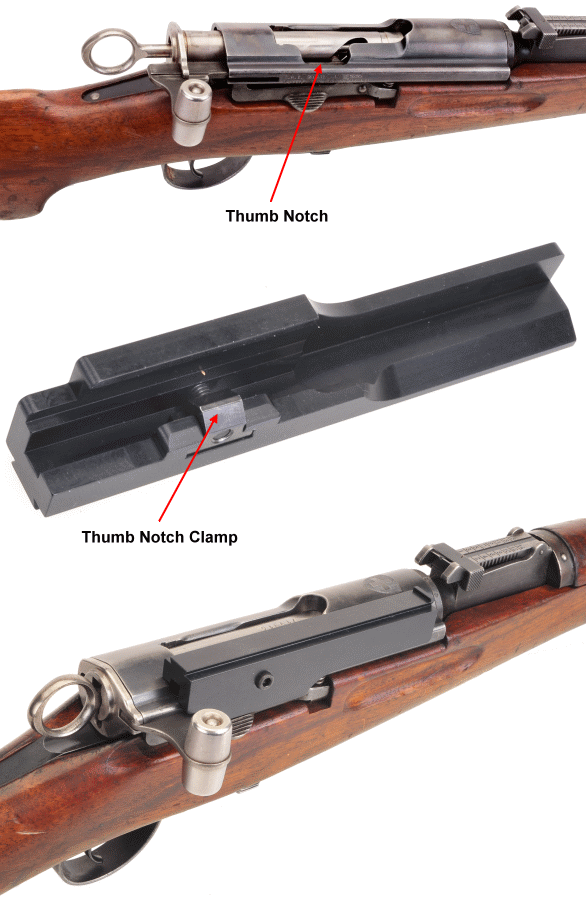
Above, the K31 with receiver thumb notch exposed, followed by the mount clamp that grabs onto the receiver, followed by the spiffy mount in place and tightened down.
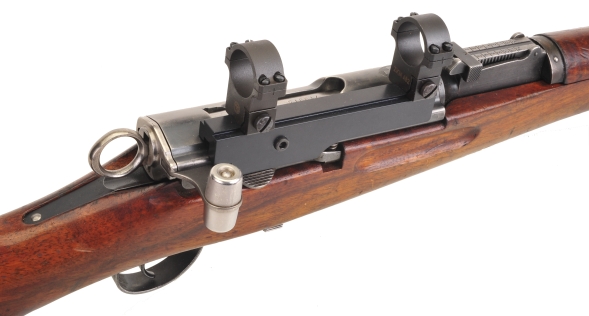
The mount with a set of 3/8″ dovetail rings installed. The rings are CZ 22 rimfire type, but I suspect they would withstand a wrap from a small sledge hammer.
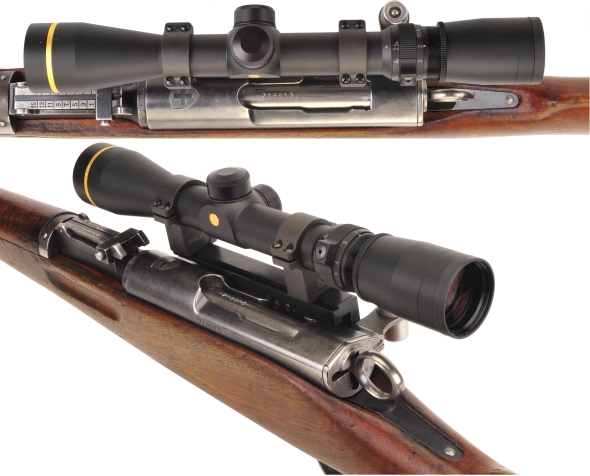
These photos show the right offset from the bore centerline, approximately 0.750″ and approximately 1.50″ when measured from bore centerline. Add in ring height and scope to get to optical centerline and the angled distance from bore centerline to optical centerline is close to 2″. The only reason this is of consequence is that the farther the optical centerline is moved from bore centerline, the greater the horizontal error at a distance and the more exaggerated the increments of scope adjustment
Offset scope compensation…
Conventional scope mounts are aligned longitudinally with bore centerline. Discounting the effects of wind and odd angles of topography, while elevation changes must occur to keep a bullet’s rise and fall appropriately on target, a bullet should remain centered side to side at any distance. This is not the case with offset mounts; mounts parallel, but to the left or right of bore centerline. An offset mount requires zeroing a scope for both vertical and horizontal axis for range compensation.
The only way an offset scope’s optical centerline can place cross hairs on a bullet’s point of impact is if the a line projected from a firearm’s bore centerline and a line projected from a scopes optical centerline intersect at the intended target. Hitting a target before the occurrence of that intersection would place point of impact left of line of sight. Hitting a target beyond the point of intersection would place the shot right of the line of sight. The dynamic looks a bit like this –
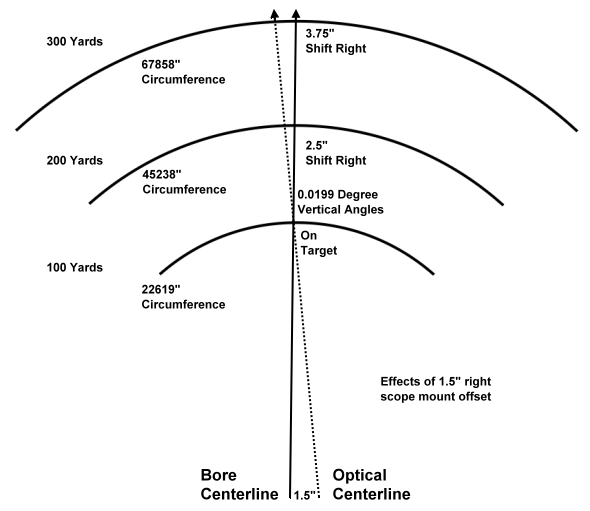
The greater the offset, the greater the vertical angles, the greater the shift beyond the zeroed range. The same condition applies to scope mounting height and increment of adjustment. A scope labeled as having a 1/4″ increment of adjustment would really only have that preciseness when the scope is mounted to the standard the scope manufacturer used to determine the 1/4″ increment.
Raising the scope higher above bore centerline than the standard used by the scope manufacturer would make the vertical angle formed by the intersection of optical centerline and bore centerline more acute and the increment of adjustment would increase above 1/4″. Having a lower mount would diminish the increment of adjustment.
Swiss Products’ mount performance
I only shot a couple dozen rounds through the K31 with a scope in place, so the effort certainly wouldn’t qualify as an endurance test. However, during that time the mount was stable, the finish was durable and the clamp did not permanently mark the rifle. Shooting at 100 yards, the issue of offset wasn’t an issue and the mount’s clamp and 3/8″ dovetail were more than strong enough to hold the scope and rifle together.

Email Notification